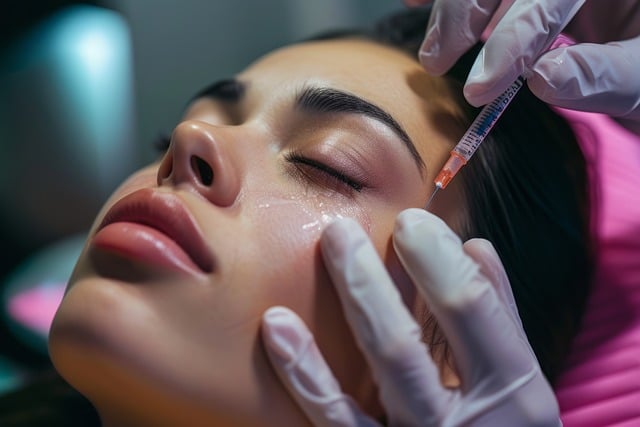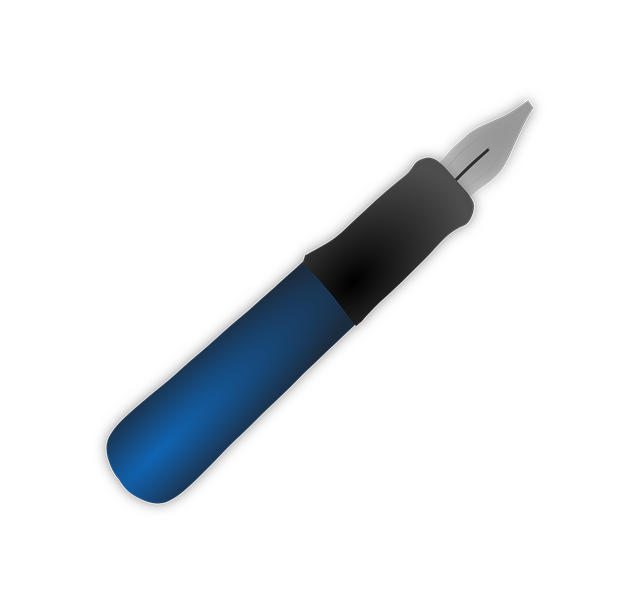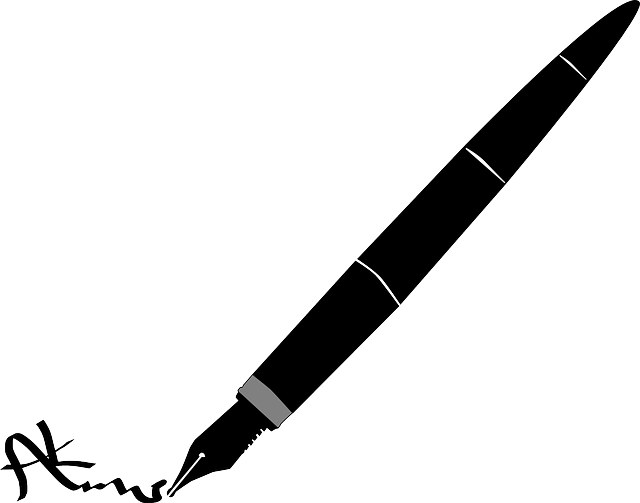Botox and dermal fillers are popular skin maintenance treatments. Botox, derived from bacteria, temporarily paralyzes muscles to reduce dynamic wrinkles, offering natural-looking results with quick recovery times. Dermal fillers, on the other hand, add volume by injecting substances like hyaluronic acid, enhancing skin elasticity and hydration for deeper wrinkle reduction. The choice between them depends on individual goals: Botox for preventing future wrinkles and dermal fillers for immediate volume enhancement. Both treatments are generally safe when performed by qualified professionals, with temporary side effects and quick recovery periods.
Botox and dermal fillers are popular skin maintenance treatments with distinct benefits. This article offers a comprehensive comparison between these two aesthetic procedures, focusing on their mechanisms, advantages, and suitable applications. Understanding Botox vs. dermal fillers is crucial for making informed decisions about achieving youthful-looking skin. Learn about safety measures, potential side effects, and when one might be preferable over the other to ensure optimal results.
Understanding Botox and Dermal Fillers: A Comparison

Botox and dermal fillers are both popular cosmetic treatments aimed at improving skin appearance, but they work in distinct ways. Botox, a type of protein produced by bacteria, is injected into muscles to temporarily paralyze them, reducing the appearance of wrinkles caused by repeated facial expressions. Its effects typically last between 3-6 months.
Dermal fillers, on the other hand, are substances like hyaluronic acid or collagen that are injected into the skin to add volume and fill in wrinkles or scars. They work immediately and can last anywhere from 6 months to several years, depending on the specific filler used. While Botox focuses on preventing wrinkle formation by relaxing muscles, dermal fillers target existing wrinkles and other skin imperfections by adding structure and plumping the skin. The choice between them often depends on individual needs and preferences, with factors like desired results, duration of effects, and potential side effects playing a role in the decision-making process.
What is Botox? Its Mechanism and Uses in Skin Maintenance

Botox is a neurotoxin derived from bacteria called Clostridium botulinum. When injected into specific muscles in small, precise amounts, it temporarily paralyzes or weakens those muscles, reducing the appearance of wrinkles and lines on the skin. This non-surgical procedure has become a popular choice for skin maintenance due to its ability to provide subtle yet effective results.
Unlike dermal fillers that add volume to the skin, Botox works by preventing muscle contractions that cause dynamic wrinkle formation. By relaxing specific facial muscles, it smoothens out fine lines and wrinkles around the eyes (crows’ feet), forehead, and mouth. This effect can last for several months, making Botox a convenient and cost-effective solution for those seeking to maintain a youthful appearance without extensive procedures. Its popularity lies in its non-invasive nature, quick recovery time, and noticeable yet natural results, setting it apart from dermal fillers in the skin maintenance market.
Advantages of Botox for Fine Line and Wrinkle Reduction

Botox has emerged as a leading treatment for fine lines and wrinkles, offering several advantages over other aesthetic procedures like dermal fillers. One of its key benefits is its ability to provide a more natural-looking result. Botox works by relaxing specific muscles that cause dynamic wrinkle formation, such as frowning or squinting, resulting in smoother skin without the risk of over-smoothing or an unnatural expression.
Unlike dermal fillers, which add volume and can sometimes lead to uneven skin texture, Botox focuses on the underlying causes of wrinkles. This non-invasive approach makes it a popular choice for those seeking subtle improvements. Furthermore, Botox has a shorter treatment time and recovery period compared to other procedures, allowing individuals to resume their daily activities promptly. Its effects typically last between 3-6 months, providing long-lasting results with minimal maintenance.
Dermal Fillers: An Alternative Approach to Skin Volumization

When considering skin maintenance and volumization options, it’s essential to explore alternatives to Botox. One such option are dermal fillers, which offer a different approach to achieving youthful-looking skin. While Botox primarily works by relaxing muscles to prevent dynamic wrinkles, dermal fillers focus on plumping and lifting the skin by adding volume.
Dermal fillers are injectable substances that enhance the skin’s natural elasticity and hydration. They can be made of various materials like hyaluronic acid, collagen, or synthetic substances. Unlike Botox, which targets specific areas, fillers can be strategically placed to define facial contours, reduce the appearance of deep wrinkles, and even out skin texture. This makes them a popular choice for those seeking broader improvements in their skin’s overall look and feel.
When to Choose Botox Over Dermal Fillers (and Vice Versa)

When deciding between Botox and dermal fillers for skin maintenance, understanding their unique properties is key. Botox is a neurotoxin that temporarily paralyzes muscles, reducing the appearance of dynamic wrinkles caused by facial movements. It’s ideal for fine lines and crow’s feet around the eyes and mouth. Dermal fillers, on the other hand, are hyaluronic acid-based substances injected into the skin to add volume and enhance specific features. They’re better suited for addressing deep wrinkles, hollow cheeks, or enhancing jawlines and lips.
The choice between Botox and dermal fillers often depends on individual goals and skin type. Botox is more effective for preventing future wrinkle formation while dermal fillers provide immediate results for volume loss. If your main concern is smoothing expression lines, Botox might be the better option. For those looking to add contour and definition, dermal fillers are typically the preferred choice.
Safety, Side Effects, and Recovery: A Comprehensive Look

When considering Botox or dermal fillers for skin maintenance, safety is paramount. Both procedures are generally considered safe when performed by a qualified professional using approved products. However, as with any medical treatment, there are potential side effects. Common temporary side effects may include mild bruising, swelling, redness, and discomfort at the injection site. In rare cases, more severe reactions have been reported, but these are usually manageable and resolve within a short period.
In terms of recovery, the process is typically quick and straightforward. Most people can resume their normal activities shortly after the treatment. However, it’s crucial to follow your healthcare provider’s post-treatment instructions, which may include avoiding certain medications or activities that could increase bleeding risk. When comparing Botox vs dermal fillers, understanding these considerations is key to making an informed decision for effective and safe skin maintenance.
